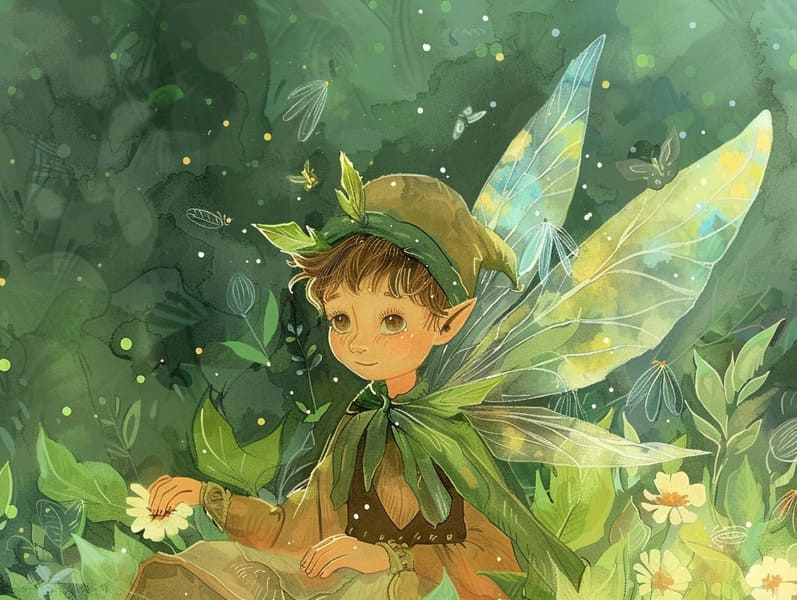The Formation of Classic Fairy Tales with Its Invariable Spell.
The Formation of Classic Fairy Tales with Its Invariable Spell.
Blog Article

Legendary fairy tales have enduring presence. These stories have been whispered from one generation to the next well before they were ever recorded. They sprang from a variety of civilizations, including Eastern traditions. They were initially passed along among adults, often carrying themes and messages relevant to the societal norms and beliefs of the time.
Jacob and Wilhelm Grimm, Jacob and Wilhelm Grimm, were among the first to assemble many of these beloved stories. Their published works, "Grimm's Story Collection," included classics like "Cinder Maid," "Hansel and Gretel," and "Schneewittchen," which have since become essentials in the world of timeless fairy tales. Similarly, Hans Christian Andersen's charming fairy tales, such as "The Mermaid," and "The Ugly Duckling," have won hearts worldwide, ensuring their place in the pantheon of timeless fairy tales.
Though they are old, these tales remain as important as ever, especially as children's bedtime stories. These charming stories are now available in numerous formats, including artistically illustrated books, enchanting animations, and digital storybooks.
Their persistent charm can be ascribed to several fascinating points:
Valuable Lessons: Traditional fairy tales often impart important moral lessons. Narratives like "The Tale of the Boy Who Cried Wolf" teach the significance of being truthful, while "The Tale of the Tortoise and the Hare" underline the benefits of steadfastness and unassuming nature. These stories offer young readers clear distinctions between good and bad, forming their moral compass in a soft yet lasting way.
Compassion and Insight: Fairy tales frequently present beings facing challenges and struggles, urging audiences to empathize with their struggles and encourage their triumphs. For instance, "The Story of Beauty and the Beast" shows us the virtue of valuing inner qualities to realize the inner self of a being, developing warmth and discernment.
Cultural Insights: Many fairy tales are rooted in the cultural contexts from which they arose. Immersing in these fairy tales can provide delightful insights into different traditions, nurturing a sense of cultural understanding and recognition.
Creativity and Imagination: The extraordinary elements in ancient fairy tales—enchanted objects—ignite children’s fantasy worlds. These tales lead readers to mythical realms, motivating innovative dreams and a sense of wonder that remains a lifetime.
Traditional fairy tales are not only bewitching but also enlightening. They serve as magical tools in promoting various mental and emotional abilities in the young. When ancient fairy tales are recited, they cultivate language skills by introducing new language and elaborate sentence structures. This practice also fosters listening skills and mental focus, as children listen intently, eager to see what happens next.
Furthermore, conversing about the themes and characters of fairy tales can advance cognitive skills and problem-solving abilities. Children learn to identify patterns, make predictions, and catch on to cause and effect. These conversations also ease kids convey their thoughts and feelings, nurturing their emotional intelligence.
In today’s technological era, the prevalence of online storybooks has made these stories more within reach than ever. Online platforms and mobile apps present ample collections of children's fairy tales that can be viewed or listened via anytime, anywhere. Fairy tales told out loud are particularly common, making available an enjoyable way for the young to savor these charming stories. Audiobooks and read-to-me videos lead characters and settings to life, often joined by whimsical soundtracks and tunes that amplify the story adventure.
The timeless appeal of timeless fairy tales lies in their ability to alter to website today's society while holding onto their core messages. Contemporary adaptations of these fairy tales often introduce more different figures and modern settings, making them pertinent to today’s audience. However, the essential messages of braveness, kindheartedness, and justness remain unchanged, continuing to appeal to kids of all ages.
Ancient fairy tales also offer a sense of comfort and recognition. They impart a structured narrative with a evident beginning, middle, and end, often closing with the wrap-up of conflicts and the triumph of truth over falsehood. This assuredness can be comforting for young ones, spreading a sense of steadfastness in an unstable world.
Classic fairy tales continue to bewitch and guide new generations, maintaining their splendor and relevance in modern society. As bedtime stories for kids, they put out a perfect blend of fantasy and learning, advancing moral values, empathy, and creativity. The proliferation of internet fairy tales and the prevalence of fairy tales read out loud promise that these old narratives remain acquirable to new generations.
By preserving and recounting these tales, we continue to cherish the rich tapestry of myths and cultural heritage. Whether you are seeing a richly illustrated book, delving into a electronic collection, or listening through an voice book, the appeal of children's fairy tales is always within reach. These narratives reveal of the endless strength of storytelling and its ability to bind us across generations and cultures.
Be it you are reading a colorful picture book, viewing a web-based library, or listening on an read-aloud book, the attraction of old fairy tales is always within reach.
These stories point out of the unceasing strength of fairy tales and its ability to unify us across epochs and places, establishing a link that fascinates and enlightens alike.